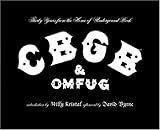
“Right Time” (The Mighty Diamonds)
I always wonder what my subconscious is attempting to inform me of when I wake up singing a song. This morning the song ringing through my mind was the Mighty Diamonds classic 1976 cut: Them Never Love Poor Marcus.
Here’s a version.
httpv://www.youtube.com/watch?v=8DAJI8dpNIE
Them never love, never love, never love poor Marcus-they
Never love him, oh no
Them never love, never love, never love poor Marcus
Till they betray him
Him own brethren sell him fe rice ‘n’ peas
They didn’t know there would be days like this
Now do you man waste in such a squeeze, yeah
Them never love, never love, never love poor Marcus-they
Never love him, oh no
Them never love, never love, never love poor Marcus
Men like Bag O’ Wire should burn in fire
the betrayer of Marcus Garvey
Them never love, never love, never love poor Marcus-they
Never love him, oh no
Them never love, never love, never love poor Marcus
Till the betray, one bredren sell him for rice and peas
They didn’t know there would be days like these
Now the human race in such a squeeze, mmm Yeah
Them never love, never love, never love poor Marcus-they
Never love him, oh no
Them never love, never love, never love poor Marcus
Men like Bag O’ Wire should burn in fire fire fire, Lord
Betrayer.
[repeat chorus]
Black man come together, unity is forever
Such a great song, and a great album, but I’m not sure exactly the point I was making to myself. Hope it isn’t the obvious point, of betrayal and politics…
Ralph Heibutzki of Allmusic writes:
Few reggae bands evoked their audience’s suffering as viscerally as the Mighty Diamonds, not least because of lead vocalist Donald “Tabby” Shaw. Although overshadowed by stars likeBunny Wailer, Shaw’s aching lilt remains a compelling signature of the roots-oriented ’70s era. His graceful yet forceful presence on songs like “I Need a Roof” — which laments lack of housing — is exactly what the music needs. A strong moralistic undertone runs throughout the album. “Right Time” warns of an impending breakdown in social order, and “Why Me Black Brother Why” decries the rampant lawlessness afflicting the island nation. “Them Never Love Poor Marcus” scornfully denounces the people who betrayed the black nationalist leader (Marcus Garvey) for “rice and peas.” “Gnashing of Teeth” takes up the Biblical imperative of Judgment Day, in which “only good works shall see you through.” Some strategic departures help to leaven the band’s approach, most notably the love song “Shame and Pride.” Lloyd Ferguson steps out of his backup vocalist role on “Go Seek Your Rights,” which reminds people to respect their differences while striving for social change, and “Africa” is a wistful tribute to the continent that Rastafarian believers consider their final home. The playing is first-rate, bolstered by unobtrusive contributions from session aces like bassist Robbie Shakespeare and drummer Sly Dunbar. No student of the genre should miss this landmark roots album.
while Robert Christgau gives Right Time an A-
On the purely aural, preverbal evidence–the sweet, precise harmonies and arrangements, the intent beat–you’d figure they were singing songs of love, or at least sexual mastery. Ditto from their foolish stage act. But in fact there are no broken hearts in these lyrics, only broken bodies, and the exultation is the exultation of oppression defied. In other words, this follows reggae conventions as Americans know it, and on a few cuts conventional is how it sounds. Usually, though, lead singer Donald Sharpe sounds as if he’s learned all this more recently than the Bob Marley of Rastaman Vibration.





















